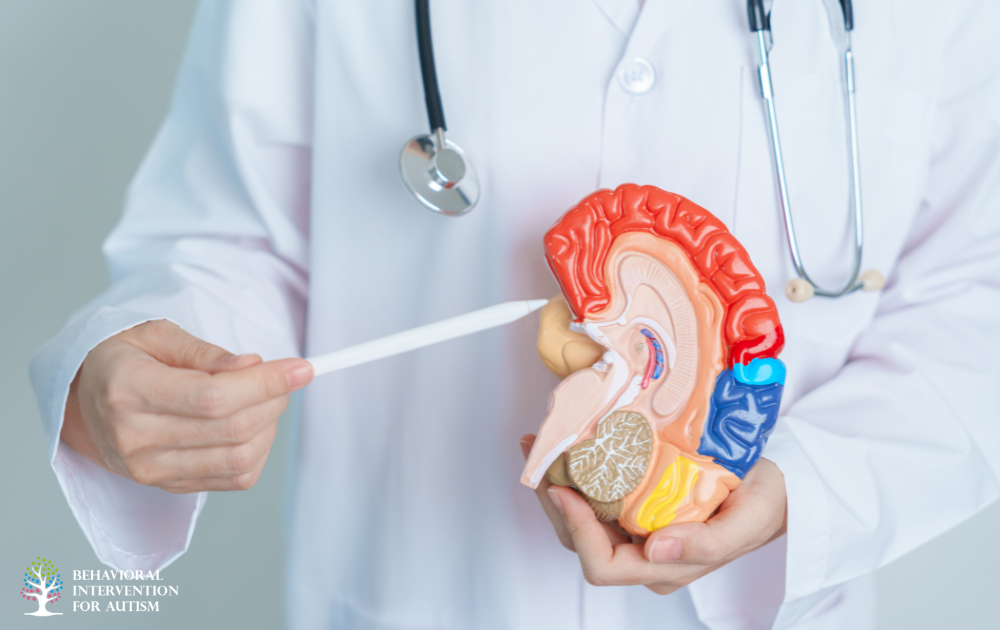
Table of Contents
The brains of people with autism process information differently compared to those without autism, showing less coordinated activity in general. This altered processing can contribute to the unique cognitive abilities and behavioral characteristics associated with autism spectrum disorder (ASD).
The precise mechanisms underlying these processing differences are still being investigated, but they likely involve a combination of genetic, environmental, and developmental factors.
Sensory Areas Activity
Individuals with autism exhibit more random activity in sensory areas of the brain compared to individuals without autism. This increased variability in sensory processing can contribute to the sensory sensitivities often observed in individuals with ASD.
For example, individuals with autism may be hypersensitive to certain sounds, textures, or visual stimuli.
Understanding these differences in sensory areas activity can help inform interventions and support strategies to manage sensory challenges in individuals with autism.
To better comprehend the complex nature of autism, it is crucial to investigate and understand the various aspects of brain activity.
By studying processing differences, sensory area activity, and the role of the caudate, researchers can gain valuable insights into the underlying mechanisms of autism and potentially develop targeted interventions to support individuals with ASD.
Structural Changes in Autism
Researchers have made significant progress in uncovering the comprehensive brain changes associated with ASD, shedding light on the molecular-level progression of the disorder.
Studies have shown that brain changes in autism extend beyond specific areas believed to impact social behavior and language. This research led by UCLA reveals that these changes are comprehensive throughout the cerebral cortex. This finding refines our understanding of how ASD progresses at the molecular level.
RNA levels in individuals with ASD have been extensively studied. Interestingly, the most significant changes in RNA levels were observed in the visual cortex and the parietal cortex. The visual cortex is responsible for processing visual information, while the parietal cortex is involved in processing touch, pain, and temperature.
These findings potentially reflect the sensory hypersensitivity often reported in people with ASD.
Genetic Risk Factors
Genetics also plays a significant role in autism spectrum disorder. Recent research has identified specific genetic risk factors associated with ASD. These genetic risk factors are enriched in a specific group of genes expressed in neurons.
Intriguingly, these genes have lower expression across the brain, indicating that the correlated RNA changes in the brain are likely the cause of ASD, rather than a result of the disorder itself.
By studying the structural changes in the brain, investigating RNA levels, and identifying genetic risk factors, researchers are making remarkable progress in unraveling the mysteries of autism spectrum disorder. This knowledge contributes to a deeper understanding of ASD and paves the way for future advancements in diagnosis, treatment, and support for individuals with autism.
Brain Regions Impacted by Autism
Autism spectrum disorder (ASD) is known to affect various regions of the brain, leading to differences in brain structure and function. Understanding these specific brain regions can provide insights into the clinical phenotypes and neurodevelopmental aspects of ASD.
Let’s take a look at what these key brain regions are:
Frontotemporal Lobe
Abnormalities in the frontotemporal lobe have been suggested to mediate clinical phenotypes of ASD, including social language processing, social behaviors, and restricted repetitive behaviors.
The frontotemporal lobe plays a crucial role in cognitive functions such as language comprehension, social cognition, and emotional processing. Differences in this brain region can contribute to the challenges individuals with autism face in these areas.
Orbitofrontal Cortex
Dysfunction in the orbitofrontal cortex (OFC) can significantly impact individuals with ASD.
The OFC is responsible for processing rewards, emotional regulation, and decision-making. In individuals with autism, OFC dysfunction impairs intangible knowledge representations of rightness, wrongness, and appropriateness.
This can contribute to difficulties in comprehending socially inappropriate behaviors and making appropriate social judgments.
Amygdala Function
The amygdala, a key component of the limbic system, is involved in emotional processing and social cognition. It has been found that the amygdala’s contributions to ASD largely derive from its involvement in fine-grained intangible knowledge representations and high-level guidance of gaze.
Dysfunction in the amygdala can impact emotional responses, social interactions, and the ability to interpret facial expressions and emotional cues.
Temporoparietal Cortex
The temporoparietal cortex (TPC) is another brain region impacted by autism. Dysfunction in the TPC may contribute to unusual posture, odd gait, clumsiness, and other motor abnormalities observed in individuals with ASD.
The TPC is involved in various functions, including sensory integration, spatial awareness, and body perception. Differences in this region can contribute to the sensorimotor difficulties often associated with autism.
Understanding how these brain regions are impacted by autism is crucial for unraveling the complex nature of the disorder. By studying these specific regions, researchers can gain valuable insights into the underlying mechanisms and potential therapeutic interventions for individuals with autism.
At Behavioral Intervention For Autism, our dedicated team offers a comprehensive ABA therapy in Florida. We provide tailored interventions to address specific challenges and improve overall well-being. Interested in how our services can make a difference for you or your team? Reach out to us today to explore how we can help.
Sources:
https://www.ncbi.nlm.nih.gov/pmc/articles/PMC6627615
https://www.uclahealth.org/news/release/brain-changes-autism-are-far-more-sweeping-previously-known
https://www.ncbi.nlm.nih.gov/pmc/articles/PMC4688328
https://elifesciences.org/digests/42256/how-does-autism-affect-the-brain
- 9 Common Obsessions of Children With Autism You Should Know - February 25, 2025
- What is Neurodiversity? A Guide to Embracing Differences - February 25, 2025
- Understanding Hyperfocus in Autism: What It Means and Why It Happens - February 25, 2025



